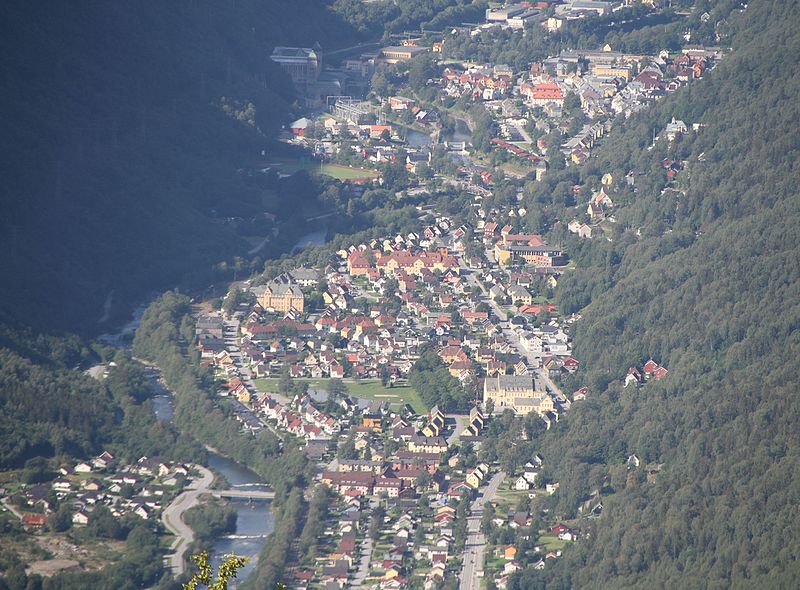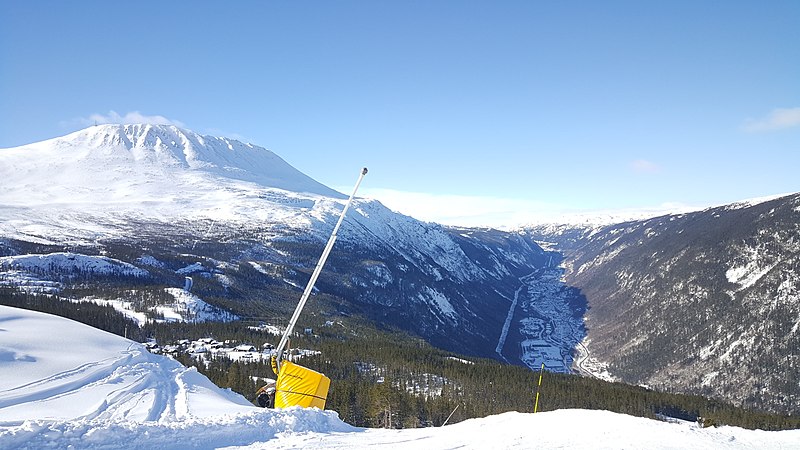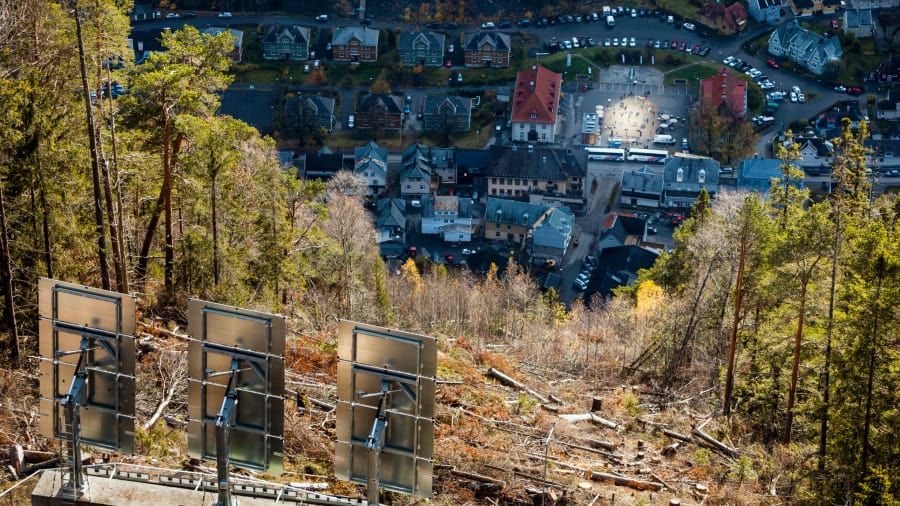The Little Bit of Sun That Cost a Half-Million Dollars

Pictured above is the small Norwegian town of Rjukan, home to about 3,500 people. As the crow flies, it’s about 95 miles (150 km) almost due west from Oslo, and it’s a very nice tourist destination. The colorful town of tightly packed homes in a river valley has a reputation as an artists enclave, and even if that’s not your thing, there’s surprisingly a lot to do — the mountains make for great skiing in the winter, and the nearby waterfalls make for excellent hiking during the warmer months.
But from September to March, Rjukan has a big problem. Here’s another picture, taken from much further away.

Wait, you don’t see it there? Look carefully in the valley between the mountains, where the shadow extends of what looks like a river of snow. Those are actually the buildings that make up the town. And from autumn until spring, that’s where Rjukan lies — in the dark around the clock. At night, of course, there’s no sun — that’s what “night” is. But during the day, Rjukan doesn’t get much of a reprieve from the darkness. As Forbes explains, “Rjukan is wedged at the bottom of a steep east-west valley in southern Norway’s Telemark region. It’s surrounded by mountains, including the 6,178-foot-high Gaustatoppen.” And during those fall and winter months, the mountains’ shadows enrobe Rjukan during the hours otherwise considered “daytime,” with little exception.
Or, at least, that was true — until 2013. Now, it’s only mostly true.
Rjukan was originally founded in the early 1900s by Sam Eyde, the founder of a fertilizer company (now aluminum and energy company Norsk Hydro). Rjukan was a “company town” — Eyde’s enterprise moved workers there so they could use the nearby waterfalls as an energy source to create saltpeter. The lack of daylight for half the year was a rather obvious problem, but not one large enough to scuttle the saltpeter plans. Over the years, more and more people came to Rjukan to work for Eyde’s organization.
In 1913, though, Eyde began investigating a solution to the shadow problem. As the Guardian reports, he “was considering a suggestion by one of his factory workers for a system of mountain-top mirrors to redirect sunlight into the valley below.” It was a simple idea, but alas, it wasn’t a feasible one. Fifteen years later, they came up with a better solution: bring the people to the sun. As the BBC reports, “in 1928, Norsk Hydro erected a cable car as a gift to the townspeople, so that they could get high enough to soak up some sunlight in winter.” This proved popular, but the promise of bringing sunlight to the Rjukan winter still lingered.
Fast forward to 2006 or so. A local artist named Martin Andersen, independently, came up with the same idea Eyde explored nearly a century beforehand. And this time, sun-reflecting mirrors seemed doable. After some research (which turned up Eyde’s attempts) and some small experiments, Andersen obtained 5 million Norwegian kroner — about $550,000 at the time — for three mirrors, each of which are about 180 square feet (17 m2) large, and a mechanism that allows them to rotate as the run moves in the sky (so to speak). The mirror trio casts a beam of light into the town square, as seen below (via CNN).

While the sunlit area is hardly huge, it’s typically appreciated by those who live in the area. The BBC shares that “recent immigrants to Rjukan who seemed most appreciative of the mirrors,” but even those who are a bit skeptical don’t mind them. Even before the mirrors came to be, the town was driven by tourism; per the BBC, those residents who dismissed the practical value of the mirrors and saw them more as an artist’s project “all admitted [the mirrors] were good for business.”
Bonus fact: For a while, the Bronx Zoo in New York had an exhibit called “The Most Dangerous Animal in the World.” Visitors walked by to see some bars on a cage, but no animal inside — instead, as seen here, they were met with a mirror.
From the Archives: Let There Be Light: Another town with a mirror (for the same reasons). Sorry the image is broken.
